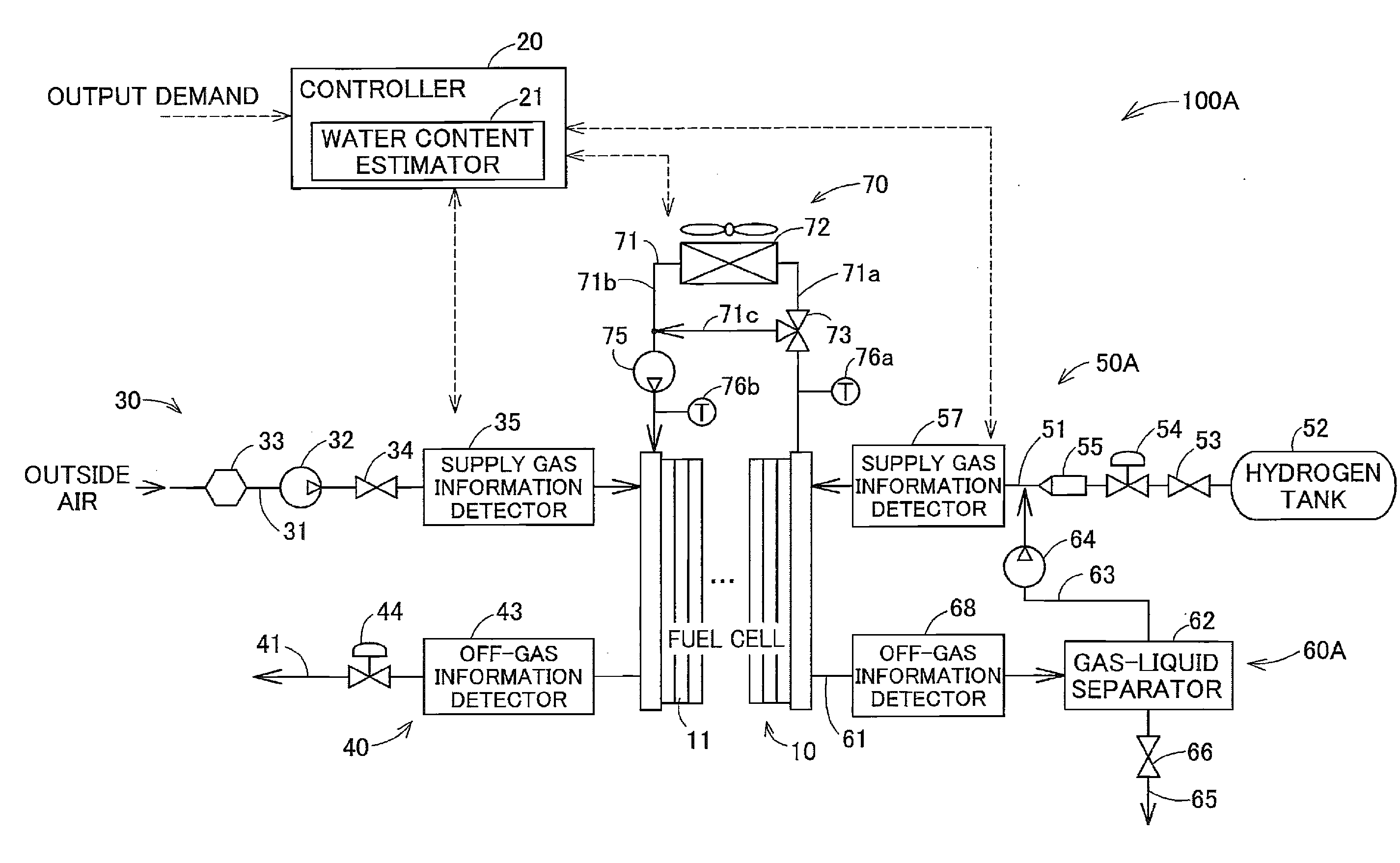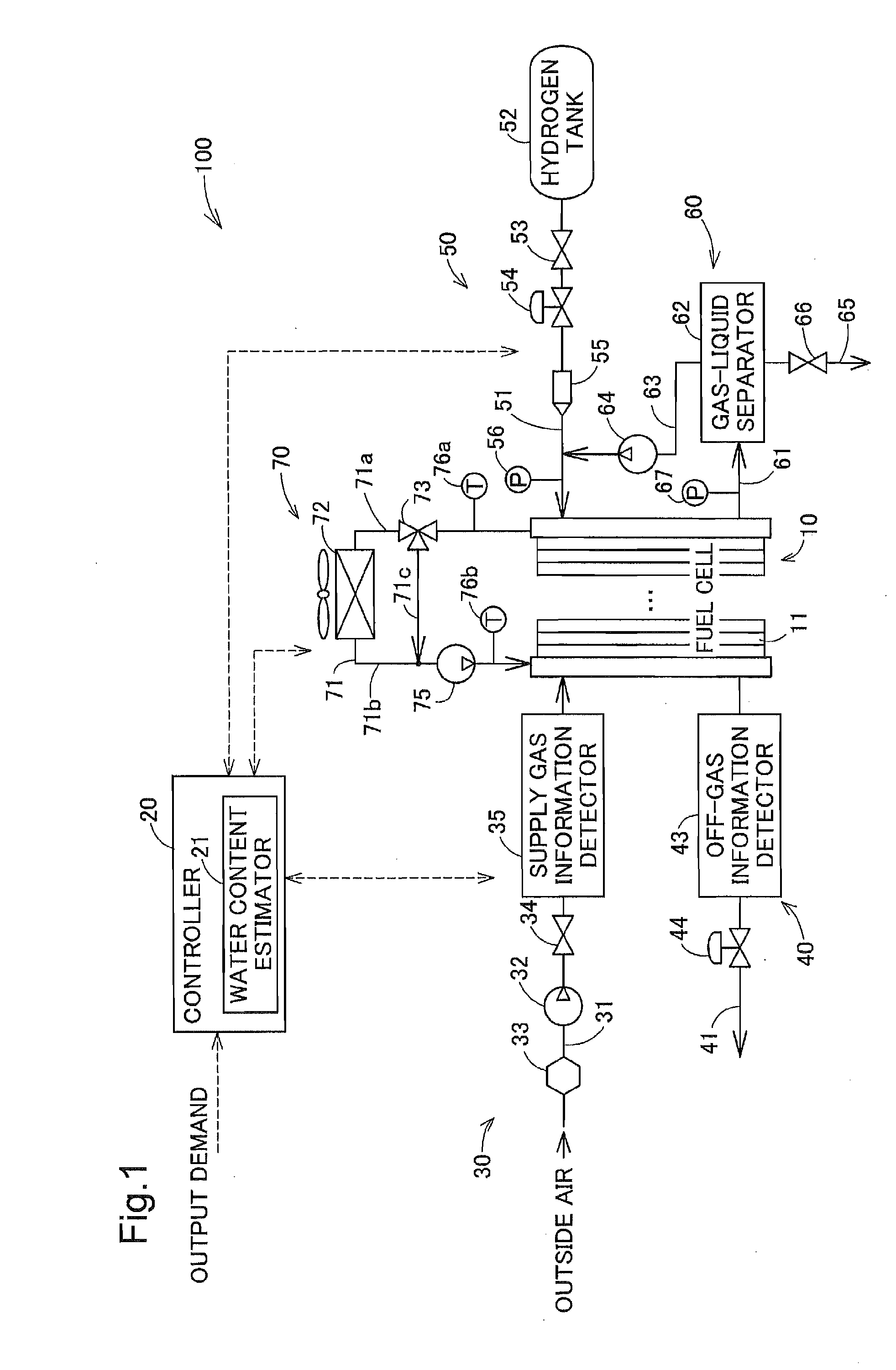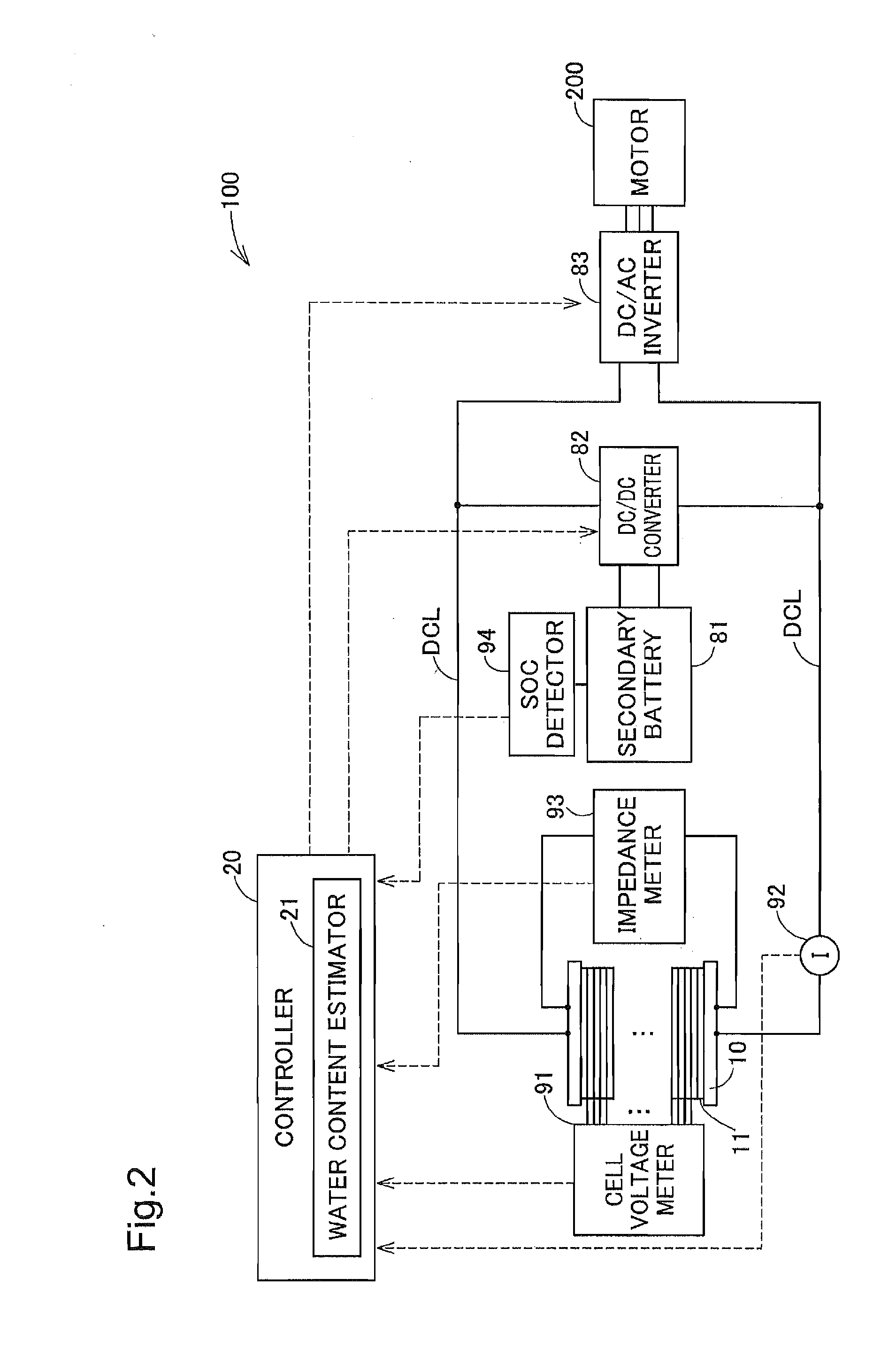Method of estimating amiount of liquid water in fuel cell, method of estimating amount of liquid water discharged from fuel cell, estimation apparatus of liquid water amount in fuel cell and fuel cell system
a technology of liquid water and fuel cell, which is applied in the field of fuel cell, can solve the problems of blocking the flow path of reactive gas inside the fuel cell, insufficient detection accuracy of water content inside the fuel cell by prior art techniques, and insufficient control of water condition inside the fuel cell
- Summary
- Abstract
- Description
- Claims
- Application Information
AI Technical Summary
Benefits of technology
Problems solved by technology
Method used
Image
Examples
first embodiment
A. First Embodiment
[0101]FIG. 1 is a diagram schematically illustrating the configuration of a fuel cell system according to one embodiment of the invention. This fuel cell system 100 is mounted on a fuel cell vehicle to output electric power used as driving force in response to the driver's demand. The fuel cell system 100 includes a fuel cell 10, a controller 20, a cathode gas supply assembly 30, a cathode gas discharge assembly 40, an anode gas supply assembly 50, an anode gas circulation / discharge assembly 60 and a refrigerant supply assembly 70.
[0102]The fuel cell 10 is a polymer electrolyte fuel cell configured to generate electric power with supplies of hydrogen (anode gas) and the air (cathode gas) as reactive gases. The fuel cell 10 has the stack structure obtained by stacking a plurality of power generating elements 11 called unit cells. Each power generating element 11 includes a membrane electrode assembly (not shown) provided as the power-generating body having electrod...
second embodiment
B. Second Embodiment
[0177]FIG. 7 is a diagram schematically illustrating the configuration of a fuel cell system 100A according to a second embodiment of the invention. The configuration of FIG. 7 is substantially similar to the configuration of FIG. 1, except a supply gas information detector 57 provided instead of the inlet pressure meter 56 in an anode gas supply assembly 50A and an off-gas information detector 68 provided instead of the outlet pressure meter 67 in an anode gas circulation / discharge assembly 60A. The electrical configuration of the fuel cell system 100A of the second embodiment is similar to the electrical configuration of the fuel cell system 100 of the first embodiment (FIG. 2).
[0178]As described above, the fuel cell system 100 of the first embodiment estimates the water content of the fuel cell 10 with ignoring the inflow and outflow amounts of water on the anode side of the fuel cell 10 (FIG. 3). The fuel cell system 100A of the second embodiment, on the othe...
third embodiment
C. Third Embodiment
[0219]FIG. 13 is a flowchart showing the procedure of water content estimation process performed by the water content estimator 21 in a fuel cell system according to a third embodiment of the invention. The flow of FIG. 13 is substantially similar to the flow of FIG. 9, except addition of steps S25 and S45. The configuration of the fuel cell system of the third embodiment is similar to that of the fuel cell system 100A of the second embodiment (FIGS. 2 and 7).
[0220]The inventors of the present invention have found that the amount of liquid water discharged from the fuel cell 10 increases after repetition of abrupt changes, i.e., abrupt decrease and subsequent abrupt increase, in flow rate of the reactive gas supplied to the fuel cell 10 during operation, for example, as in the case of a restart after a temporary stop of the reactive gas supply. When a temporary stop of the reactive gas supply is detected from the operating condition information, the water content ...
PUM
 Login to View More
Login to View More Abstract
Description
Claims
Application Information
 Login to View More
Login to View More - R&D
- Intellectual Property
- Life Sciences
- Materials
- Tech Scout
- Unparalleled Data Quality
- Higher Quality Content
- 60% Fewer Hallucinations
Browse by: Latest US Patents, China's latest patents, Technical Efficacy Thesaurus, Application Domain, Technology Topic, Popular Technical Reports.
© 2025 PatSnap. All rights reserved.Legal|Privacy policy|Modern Slavery Act Transparency Statement|Sitemap|About US| Contact US: help@patsnap.com



